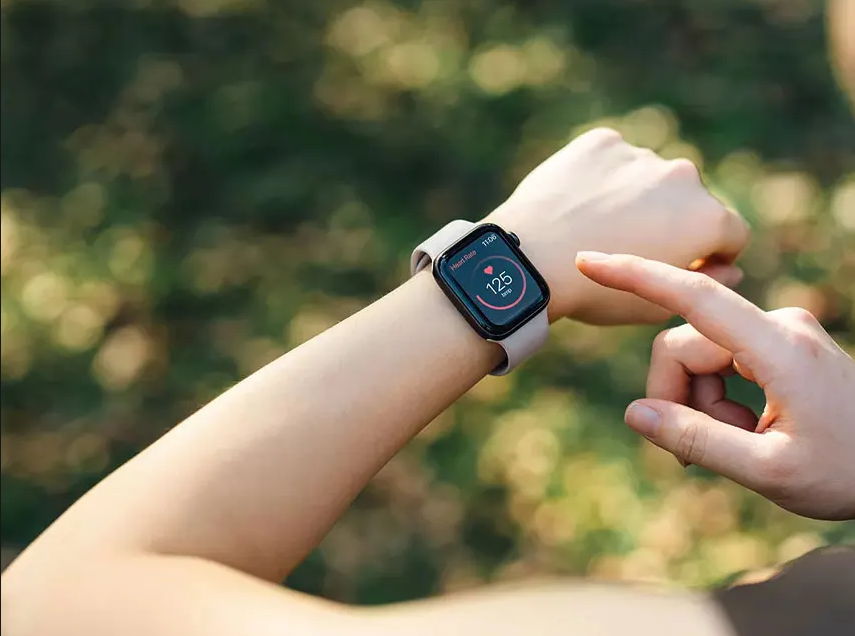Future on Your Wrist Imagining the Next Wave of Wearable Tech

Futuristic technology gives us a glimpse into a world of limitless possibilities. Wearable technology, including smartwatches and pedometers, has grown significantly over the years and is expected to continue progressing. The future lies in a world where a person can seamlessly integrate technology into sustainable living. This generational innovation comes with tools for addressing issues in healthcare, sustainability, socio-environmental connectivity, and so on. The details serve as a guide to help people navigate the next phase in wearable devices, which is what this blog helps to unbox.
1. Health Monitoring: Beyond Fitness Tracking
Health monitoring on smartwatches has become the norm, but people are increasingly interested in customising and engineering their devices beyond simply counting steps or measuring heart rates. Future devices are likely to enhance not only tracking physical activity but also monitoring blood glucose levels, measuring hydration, and even detecting signs of early-onset diseases. These days, customising one's health gadget is no longer a dream. For individuals seeking ongoing and practical health evaluations, future wearable technology will make this possible through sensors attached to skin-like materials. There will be patches capable of recognising abnormal heartbeats long before a patient displays any severe symptoms, exceeding current capabilities. Powerful AI facilities can continuously analyse the patient's data in the context of their unique health needs and habits, whether adjusting nutrition plans or scheduling consultations with medical specialists in advance. Remember that mental health, which was previously neglected, will also become a priority. Devices can measure cortisol levels in sweat and evaluate the brain's electrical activity to assess anxiety and fatigue. When integrated with mindfulness programs, they become real-time ‘talking’ guides for breathing exercises or meditation, thus closing the chapter on mental health support.
2. AI and Ambient Computing Intertwined
Wearable devices of the future will serve as gateways to ambient computing, where technology is almost invisible while boosting human abilities. AI assistants integrated into wearables will provide companion-level assistance, tailored to the context, routines, and even biometric information. Our smart devices, like Bright Rings, can autonomously manage sleep settings by controlling the home's thermostat to ensure optimal rest. At the same time, AR glasses could provide real-time translation on calls with international colleagues or focus during presentations. These devices will adapt to user behaviour and seamlessly evolve into extensions of the mind and body. Privacy will remain an important issue. Next-generation wearables will require sophisticated encryption methods and user data sharing control to balance personalisation with security.
3. Self-Sustaining Designs That Are Discreet and Flexibly Efficient
Adjustable batteries and environmentally friendly materials will enable “next-gen” devices to evolve from clunky wristband wearable tech into fashionable accessories, such as bracelets, clothing, or even temporary tattoos. The devices will be ultra-comfortable, pain-free, and soft, flexible electronics that will hug the body. Devices are being designed to transform, featuring stretchable batteries constructed from biodegradable materials and self-healing polymers that can repair minor scratches, thereby enhancing durability. Energy harvesting, developed for motion-based power generation known as ‘kinetic energy harvesting,’ alongside solar-charging fabrics, will likely eliminate the need for daily device charging.
4. Sensory Functions Integration With Augmented Reality (AR)
The introduction of AR contact lenses and glasses will completely transform interaction with the world. The next-generation headsets and glasses will enable overlays of virtual information over the physical world, further enhancing navigation, social interaction, education, and daily living. Imagine using AR-enabled lab goggles for students to conduct virtual chemistry experiments or AR glasses to identify and describe plants and animals during hikes. People with vision disabilities can have visual information transformed into tactile sensations, and sounds can be amplified for those who are deaf; these devices offer a myriad of possibilities. These incredible solutions will significantly change the way individuals access information and experiences by addressing the issues of educational and social disparity.
5. Sustainability and Ethical Innovation
With the advancement of wearable technology, sustainability will now be considered in the design process. Future devices will utilise environmentally friendly materials, such as plant-based polymers, and will be designed for easy repair and recycling. Companies may implement “Circular Economy” models, where old devices are refurbished, repurposed, or modified. Ethical factors will also influence development. Wearables that monitor employees’ productivity or health require active consent and control over data. Robust data policies and laws will protect users by making it safe for tools to help people without misusing their information.
6. Rise of Neural Interfaces and Brain-Computer Connectivity
The next frontier is the most advanced form of wearable technology still in development: brain-computer interfaces (BCIs). Devices such as EEG headsets and even non-invasive neural implants could one day facilitate two-way communication between people and their machines. The possibilities are endless, from life-altering medical applications to enhancing mental capabilities. Paralysed individuals could control advanced prosthetic limbs. Students could concentrate better while studying through BCIS, and artists would be able to mentally sketch ideas in their minds and project them onto screens. These devices are still in the early stages of development, but BCIS has a lot to push humanity's limits. Ethical discussions regarding privacy and access will increase alongside development.
The upcoming generation of wearables is advancing toward a reality in which devices are no longer considered gadgets, but essential allies in one’s healthcare, productivity, and creativity. These developments will provide users with unprecedented insights into their bodies, access to the latest technologies, and transform their collaboration with machines. However, these innovations must first overcome critical obstacles. Designers must prioritise user privacy, ensuring that data collected by wearables is protected and controlled by the user. All aspects of the production process, including material selection and energy systems, should work towards sustainability, from using biodegradable components to employing low-energy processes. Alongside these, society generally has ethical considerations around equity—using advanced wearables ensures the gap between privileged and underserved communities doesn’t deepen. Ultimately, the next generation of wearables will only succeed when it needs innovation that has empathy at its core. Emphasising human-first approaches and ethics will ensure that wearable technology improves lives while safeguarding identity, the environment, and health. The future will involve more intelligent devices and tools that enhance human capabilities, allowing us to live healthier and more interconnected lives.
post

Lifestyle ≠ 28 October
Fashion and Wellness: How What You Wear Can Affect Your Health

Lifestyle ≠ 28 October
Future of Fashion: Exploring the Role of AI and Virtual Reality in Style

Lifestyle ≠ 28 October
The Intersection of Fashion and Music: Style Influences from Iconic Artists

Lifestyle ≠ 28 October

Lifestyle ≠ 28 October
Previous Post
No Previous blog available.
Next Post
GADGETS AND TECH October 28
How Streaming Devices Have Changed Conventional TV Watching
